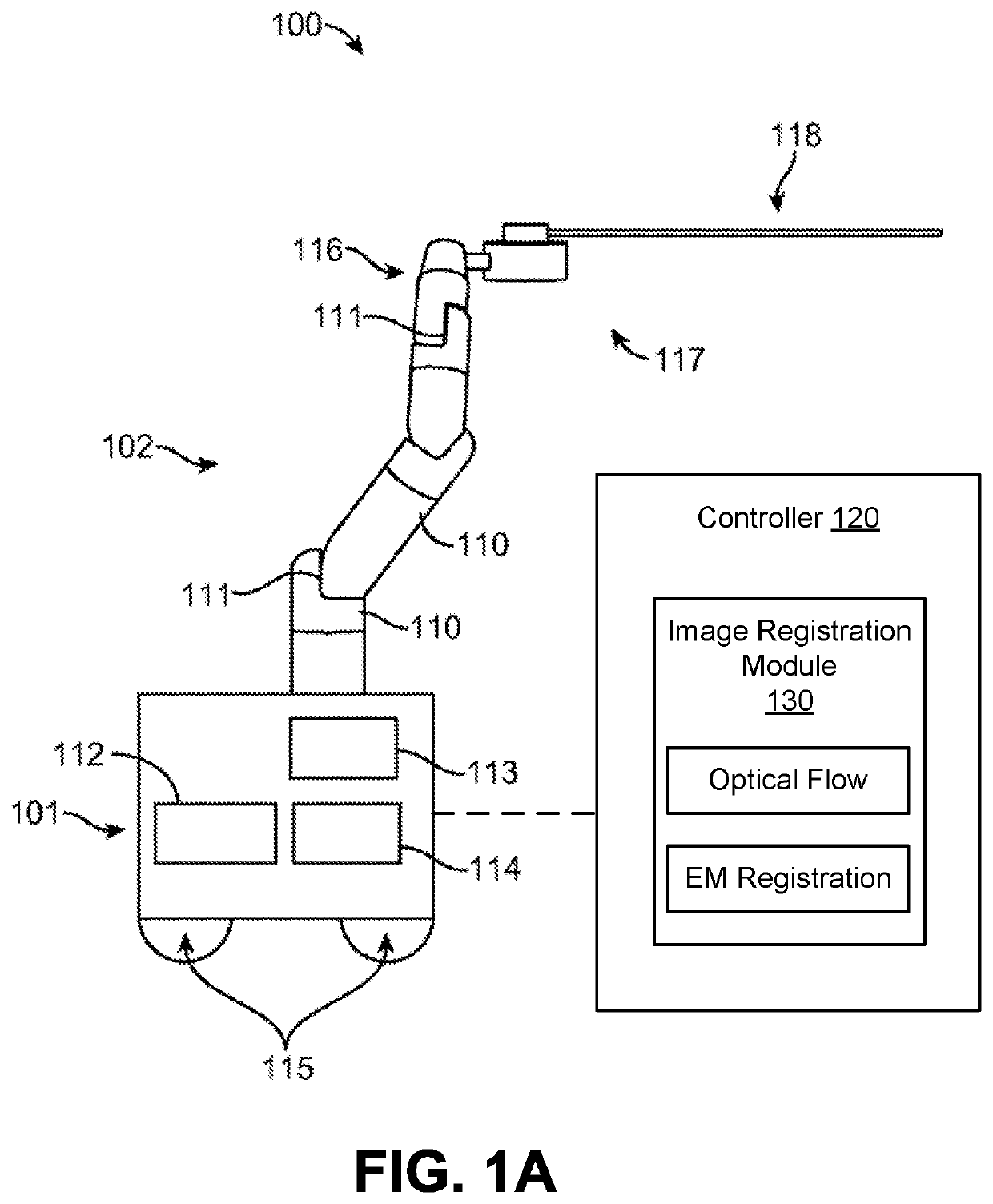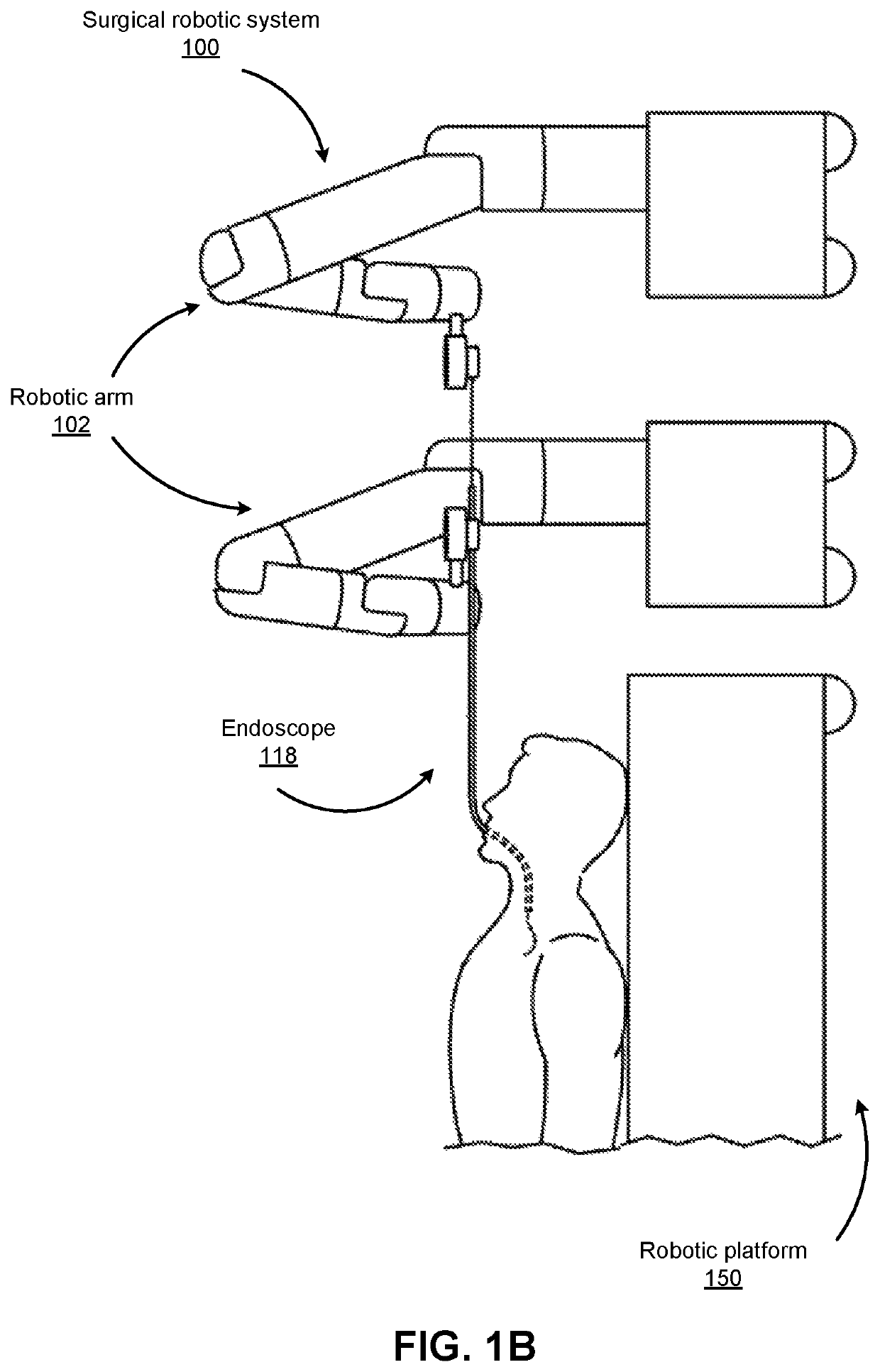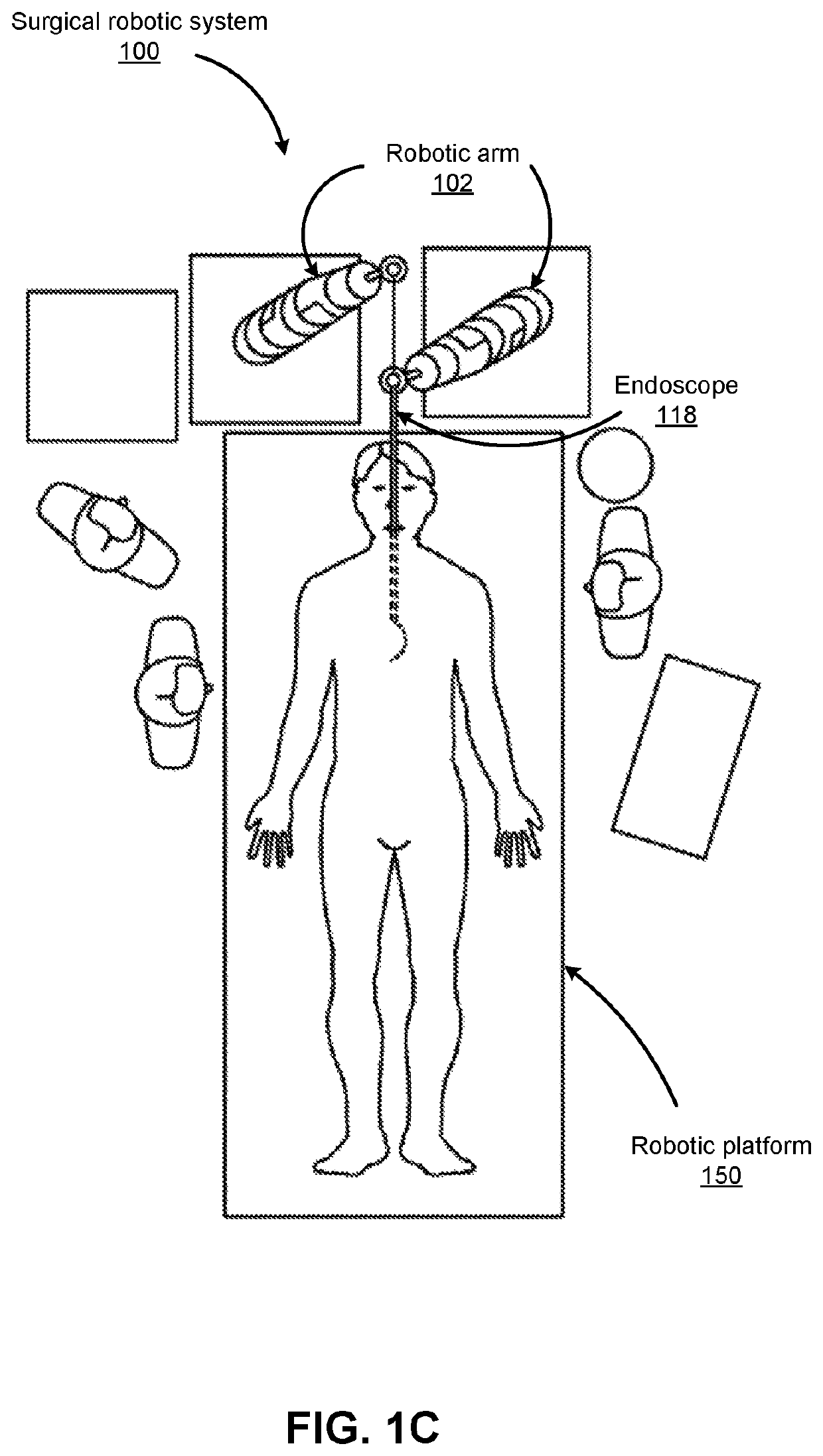Flexible instrument insertion using an adaptive insertion force threshold
a flexible, insertion force technology, applied in the field of surgical robotics, can solve the problems of buckling endoscope, affecting the insertion of surgical instruments, pushing against internal anatomy that may be fragile and subject to tearing, etc., to prevent buckling of the instrument or possible injury to the patien
- Summary
- Abstract
- Description
- Claims
- Application Information
AI Technical Summary
Benefits of technology
Problems solved by technology
Method used
Image
Examples
first embodiment
[0095]As shown in FIGS. 9C-9D, a sensor C and a sensor D are placed in the second sensor region (e.g., a portion of the leader). In a first embodiment, both sensors C and D are position sensors. In FIG. 9C, in response to a command to move the second region to an expected positions C and D, the sensor C detects a measured position C and the sensor D detects a measured position D. The measured position C and measured position D are compared with the expected position C and the expected position D. The comparison indicates whether the measured positions (based on the raw data or some derivation thereof such as the distance between them) deviate from the expected positions more than a threshold (not matching) or less than a threshold (matching). If measured and expected match, the surgical robotics system determines that buckling has not occurred, and that it has occurred if they do not. Examples of derived parameters used for detecting buckling include a slope, a distance, curvature, ...
second embodiment
[0096]In a second embodiment, sensors C and D are force sensors. In response to a command to insert the endoscope having an expected forces A and B in the second region, the sensor C detects a measured force A (e.g., a first torque) and the sensor D detects a measured force B (e.g., a first torque) in FIG. 9C. The measured force A and measured force B are compared with the expected force A and the expected force B. The comparison indicates whether the measured forces (based on the raw data or some derivation thereof) deviate from the expected forces more than a threshold (not matching) or less than a threshold (matching). If the measured and the expected match forces, the surgical robotic system 100 determines that buckling has not occurred, and that it has occurred if they do not.
third embodiment
[0097]In a third embodiment, the sensor C and the sensor D have different sensor types. For example, the sensor C is a position sensor and the sensor D is a force sensor. In response to a command to insert the endoscope having an expected position C and an expected force B in the second region, the sensor C detects a measured position C and the sensor D detects a measured force B. The measured position C is compared with the expected position C and the measured force B is compared with the expected force B. The comparisons indicate whether the measured position C deviates from expected position C more than a threshold (not matching) or less than a threshold (matching), and whether the measured force B deviates from the expected force B more than a threshold (not matching), or less than a threshold (matching). If the measured and the expected match, the surgical robotic system determines that buckling has not occurred, and that it has occurred if they do not
[0098]As shown in FIGS. 9E...
PUM
 Login to View More
Login to View More Abstract
Description
Claims
Application Information
 Login to View More
Login to View More - R&D
- Intellectual Property
- Life Sciences
- Materials
- Tech Scout
- Unparalleled Data Quality
- Higher Quality Content
- 60% Fewer Hallucinations
Browse by: Latest US Patents, China's latest patents, Technical Efficacy Thesaurus, Application Domain, Technology Topic, Popular Technical Reports.
© 2025 PatSnap. All rights reserved.Legal|Privacy policy|Modern Slavery Act Transparency Statement|Sitemap|About US| Contact US: help@patsnap.com



